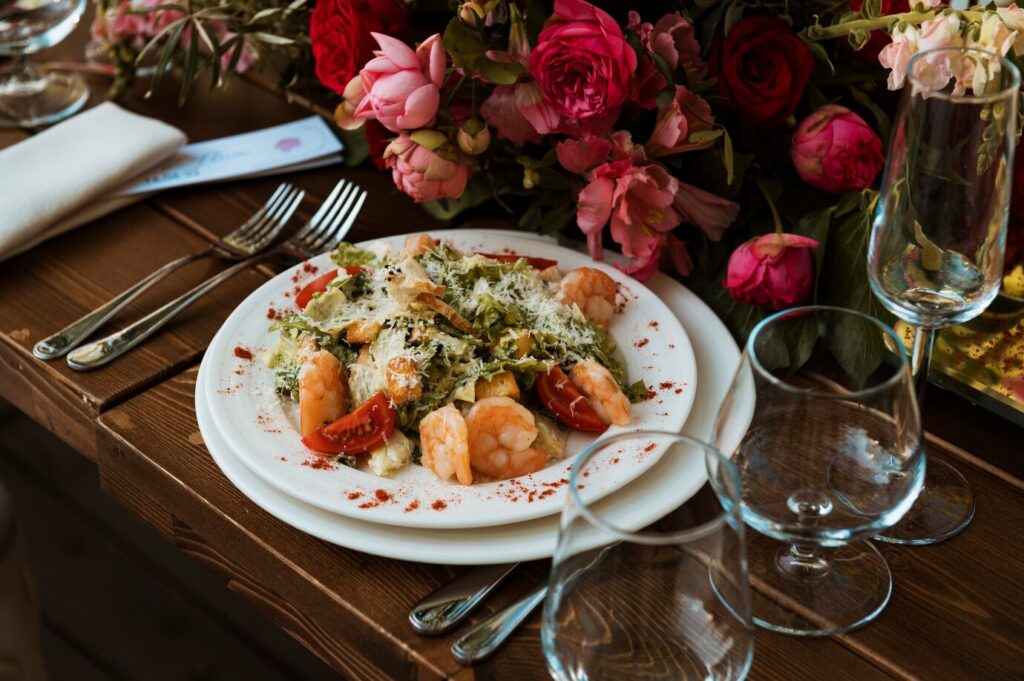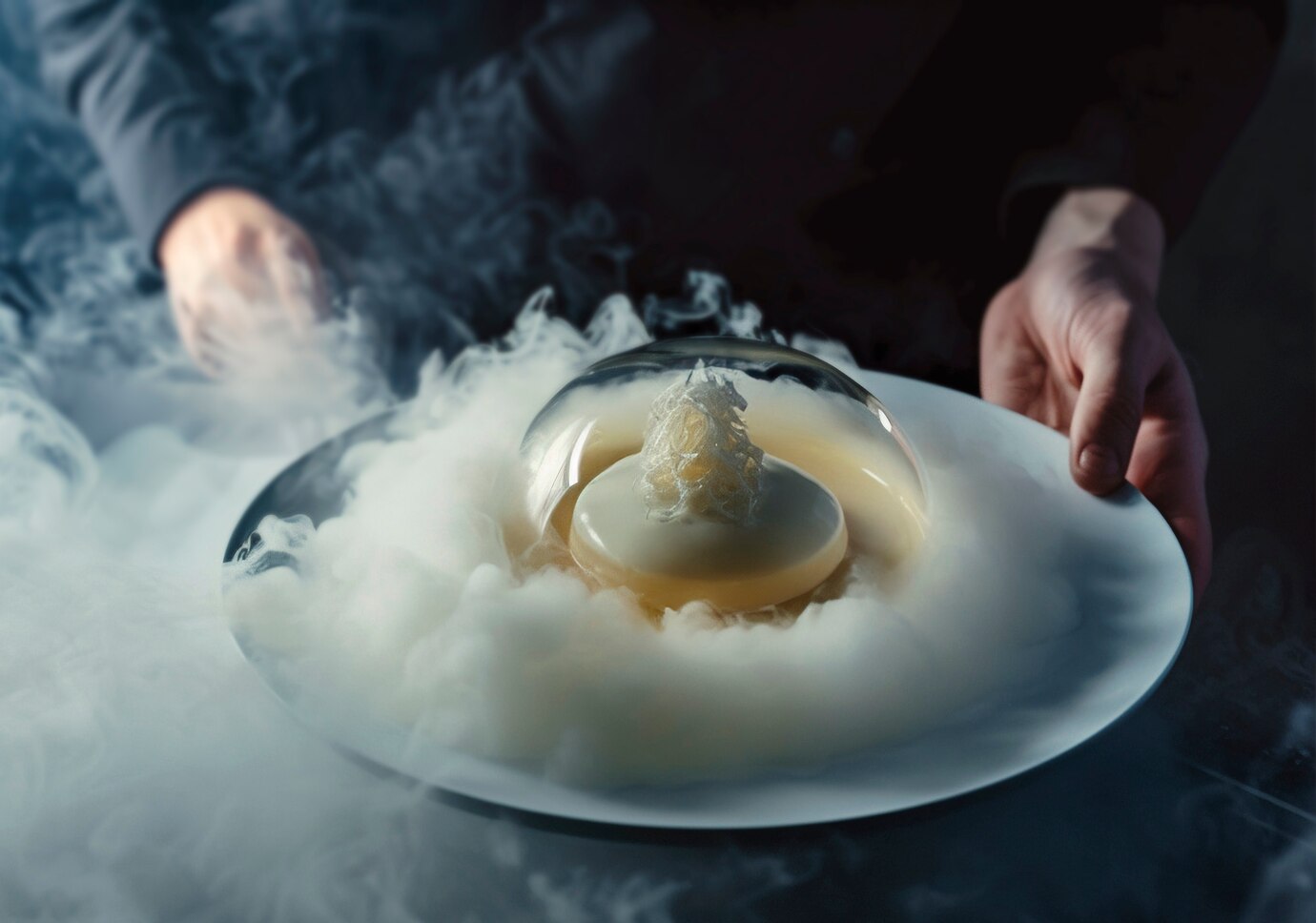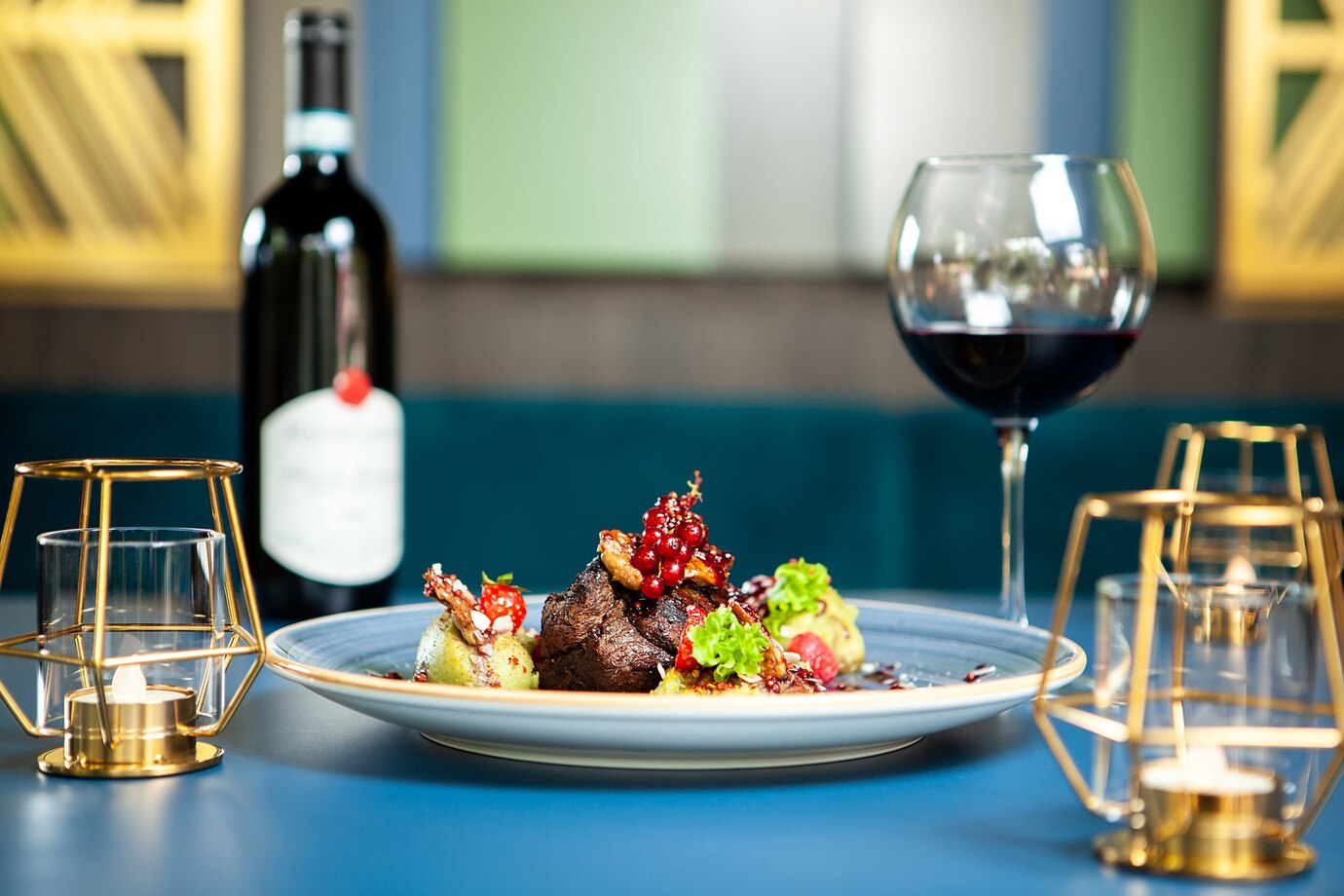The Food Blog

The Evolution of Tasting Menus: A Look at Fine Dining Innovation
The tasting menu is a star in the realm of luxury dining. It invites food enthusiasts to savour a chef’s creative flair through a curated collection of small, sumptuous bites. Once a straightforward lineup of dishes, it unfolds into a multi-sensory feast. Here, flavours, dance, texture, surprises, and presentations dazzle in a theatrical showcase of gourmet artistry.
The tasting menu has changed dramatically, from Michelin-starred restaurants to trendy pop-ups. This guide shows how fine dining innovation has transformed it into a culinary masterpiece.
The History of Tasting Menus

1. The Origins: European Royalty and Banquets
The concept of a multi-course dining experience dates back to the lavish feasts of European royalty. During the Renaissance, aristocrats would host elaborate banquets with a parade of dishes, each more extravagant than the last.
2. The French Influence: La Dégustation
In the 19th century, French haute cuisine introduced la dégustation, which means “tasting.” It involved serving small portions of different dishes one after another. This refined approach laid the foundation for modern tasting menus.
Notable Figures:
- Auguste Escoffier, the father of modern French cuisine, introduced the service à la russe, where dishes were served in a sequence rather than all at once.
- Paul Bocuse popularised the multi-course degustation menu in the mid-20th century, making it a staple in French fine dining.
The Modern Tasting Menu: From Classic to Avant-Garde
1. The Traditional Tasting Menu
The classic tasting menu typically features 6 to 12 courses, each carefully crafted to showcase the chef’s signature style. It often follows a structured progression, moving from light and delicate flavours to richer, more robust dishes.
Key Features of Traditional Tasting Menus:
- Course progression: Beginning with amuse-bouches or appetisers, leading into mains, and concluding with desserts.
- Seasonal ingredients: Menus are often based on seasonal and locally sourced produce, offering fresh, vibrant flavours.
- Wine pairings: Each course is paired with a complementary wine or cocktail, enhancing the overall experience.
At The French Laundry in California, Chef Thomas Keller offers a tasting menu. It features oysters and pearls, a sabayon of pearl tapioca with oysters. There’s also slow-cooked lamb. The dishes showcase classical techniques but with a modern twist.
2. Thematic and Experimental Tasting Menus
In the contemporary fine dining scene, many chefs craft thematic tasting menus, tell a story, or explore a specific concept through their dishes.
Key Features of Thematic Tasting Menus:
- Narrative-driven courses: Each dish represents a chapter in a culinary story, creating a cohesive and immersive experience.
- Multi-sensory elements: Aromas, sounds, and visuals enhance the dining experience.
- Experimental techniques: Chefs use molecular gastronomy and avant-garde techniques to transform flavours and textures.
Example: At Alinea in Chicago, Chef Grant Achatz serves unique dishes. You’ll find scented vapour, edible balloons, and desserts on the table. This style blurs the lines between food and art.
3. Omnivore, Vegetarian, and Vegan Tasting Menus
With the rise of plant-based dining, fine dining restaurants now offer vegetarian and vegan-tasting menus that celebrate vegetables’ versatility.
Key Features of Plant-Based Tasting Menus:
- Innovative plant-based techniques: Chefs use smoking, fermenting, and slow-roasting techniques to extract bold vegetable flavours.
- Seasonal and foraged ingredients: Many menus highlight locally foraged herbs, roots, and wild mushrooms, offering a connection to nature.
- Dairy-free and gluten-free options: Vegan menus often focus on dairy alternatives and gluten-free grains.
Example: Eleven Madison Park (New York) ‘s all-vegan tasting menu features cucumber with melon smoked daikon and sunflower butter with fermented bread, redefining plant-based fine dining.
Innovative Techniques in Modern Tasting Menus
1. Molecular Gastronomy

Molecular gastronomy has revolutionised the tasting menu by introducing scientific techniques that manipulate the textures and forms of ingredients.
Examples of Molecular Gastronomy in Tasting Menus:
- Spherification: Liquids transformed into gelled spheres that burst with flavour upon tasting.
- Liquid nitrogen freezing: Instantly freezes ingredients, creating smoky and ethereal presentations.
- Foams and airs: Light, airy textures created using emulsification techniques.
Chef Heston Blumenthal uses molecular gastronomy at The Fat Duck in the UK. He serves nitrogen-poached aperitifs and multi-sensory dishes. One dish, “Sounds of the Sea,” even includes a seashell-shaped device that plays ocean sounds, adding to the dining experience.
2. Deconstructed and Reimagined Dishes
Many modern tasting menus feature deconstructed dishes, where chefs break down familiar recipes into distinct flavour components presented unexpectedly.
Examples of Deconstructed Dishes:
- Deconstructed Caesar Salad: Parmesan foam, crisp lettuce chips, and anchovy gel instead of a traditional salad.
- Reimagined Sushi: Compressed rice with flavour spheres instead of whole fish slices.
- Liquid Ravioli: Ravioli filling was a bursting liquid sphere encased in a thin gel membrane.
At Disfrutar in Barcelona, the tasting menu offers deconstructed gazpacho as a jelly sheet. This unique dish unexpectedly captures the familiar flavors of tomato and pepper.
3. Interactive and Immersive Experiences
Some fine dining establishments make tasting menus interactive, incorporating theatre, music, and visual effects into the meal.
Examples of Interactive Tasting Experiences:
- Edible centrepieces: Diners crack open edible sculptures as part of the dining ritual.
- Tableside preparation: Chefs plate or finish dishes at the table, adding an element of performance.
- Augmented reality and projections: Digital projections on the table or plates enhance the visual storytelling of the dish.
Example: At Ultraviolet in Shanghai, the dining room transforms with each course. Projected visuals, soundscapes, and scents enhance the tasting menu experience.
Why Tasting Menus Are the Pinnacle of Fine Dining
1. Culinary Storytelling
Tasting menus let chefs show their cooking style through a series of dishes. Each course builds a story.
2. Exclusivity and Prestige
Fine-dining tasting menus provide a unique experience. They feature rare, seasonal, and high-quality ingredients, making them a luxury for special occasions.
3. Multi-Sensory Adventure
Modern tasting menus engage more than just taste and smell. They also involve sight, sound, and touch, creating a full sensory experience.
New Tasting Menu

The tasting menu has blossomed from a basic multi-course meal into an artful culinary experience. With molecular gastronomy, deconstruction, and sensory storytelling, fine dining chefs create drama on every plate.
Whether you indulge in a molecular masterpiece or an all-vegan adventure, these curated menus exemplify the heights of culinary creativity. Each dish invites diners on an unforgettable voyage through flavours, textures, and innovation.









